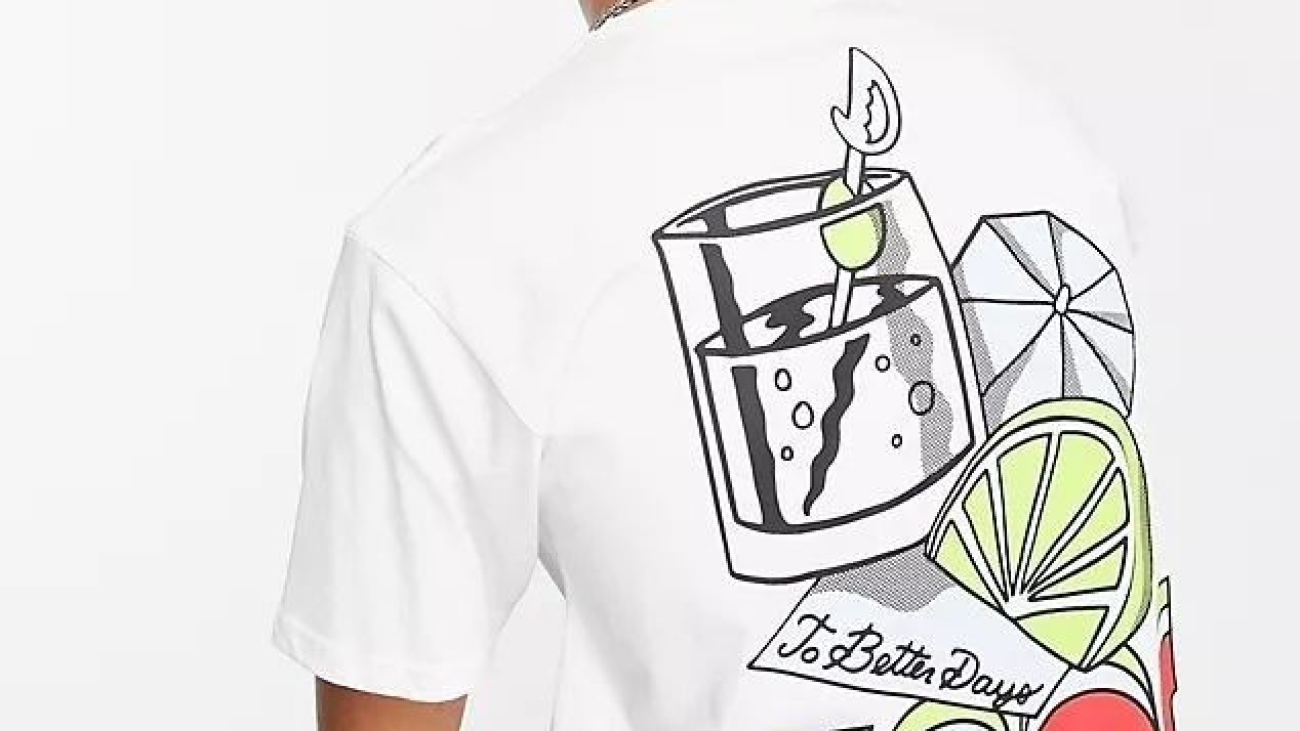Introduction
The T-shirt stands as a testament to the power of simplicity. A seemingly unremarkable garment, it bridges continents and cultures, transcending boundaries of class and creed. Its humble beginnings belie the profound impact it now wields over fashion, popular culture, and even political discourse. In this exploration, we trace its storied journey, uncover the secrets of its enduring appeal, and peer into the innovations that promise to shape its future.
Historical Roots
The T-shirt’s origins lie in necessity. In the heat of industrial expansion and the fervor of athletic competition, people sought a light, breathable layer that enabled ease of movement. Craftsmen experimented with knitted fabrics, discovering that a soft, stretchy weave provided far greater comfort than the stiff cotton and wool undergarments of earlier eras. Worn initially as underlayers by laborers and servicemen, these garments soon crept into the public eye as social mores relaxed. Working-class citizens adopted the T-shirt for its practicality, unwittingly setting the stage for its transformation into an emblem of modern casualwear.
Material Alchemy
Central to the T-shirt’s popularity is its material composition. Traditional cotton remains a revered choice for its natural softness and ability to absorb moisture. Variations in weave density yield differences in weight and opacity, catering to climates both sweltering and temperate. The rise of organic cotton reflects a broader push toward environmental stewardship, offering consumers the tactile pleasures of cotton farming alleviated from harsh agrochemicals. Meanwhile, blends incorporating synthetic fibers such as polyester or elastane lend resilience and stretch, ensuring that the shirt resists sagging and maintains shape even after repeated wear.
Beyond cotton and its blends lies a frontier of advanced textiles. Performance fabrics originally designed for elite athletes now populate everyday racks. Moisture-wicking yarns ferry perspiration away from the skin, while antimicrobial finishes inhibit odor-causing microbes. High-tech treatments can imbue fibers with ultraviolet protection or phase-change capabilities that moderate body temperature. Through these innovations, the T-shirt transcends its roots as a simple undergarment to become a multifunctional tool of comfort.
Design Evolution
The archetypal crew neck endures as an icon of minimalism, its circular collar framing the neckline without distraction. In contrast, the V-neck silhouette introduces a hint of sophistication, elongating the torso and allowing for layering under structured jackets. Sleeve variations abound: raglan cuts extend lines to the collarbone for a sporty flair, while cap sleeves and sleeveless versions cater to both style and function. Hemlines, too, have evolved—traditional straight cuts yield to curved or asymmetric edges that adapt gracefully to tucks, knots, and layered ensembles. These design refinements have elevated the garment from backstage necessity to featured player in curated wardrobes.
Canvas for Expression
Perhaps no facet of the T-shirt eclipses the power of its surface as a communicative arena. Early graphic shirts bore crude slogans or logos, but advances in printing have since unlocked the potential for photographic realism and vibrant color. Screen printing remains a stalwart for bold, blocky designs, yet digital direct-to-garment techniques now rival traditional methods, enabling small-batch artistry without prohibitive setup costs. Musicians, filmmakers, and visual artists collaborate with apparel houses to emblazon wearable art across the chests of fans. Political campaigns harness the format to broadcast messages with immediacy and reach. In this way, the T-shirt becomes less a piece of clothing than a banner for ideas.
Cultural Resonance
From protest marches to pop concert arenas, the T-shirt has become shorthand for belonging. Sporting events distribute team shirts en masse, forging unity among spectators and athletes alike. Grassroots movements rally supporters with emblazoned slogans that convert individuals into walking billboards. In cinematic narratives, a character’s choice of emblem or graphic can signal allegiance to a cause or subculture. Street style photographers immortalize rare drops as symbols of insider status. As these examples attest, the T-shirt serves both as mirror and beacon, reflecting communal values while guiding collective identity.
Sustainability Imperative
Yet the proliferation of T-shirts—particularly within fast-fashion ecosystems—has exacted an environmental toll. Cheap, rapid-turnover production can leave behind a wake of water pollution, wasted fabric, and opaque labor practices. In response, an ethical renaissance has taken hold among brands and consumers. Transparency reports illuminate supply chains from field to factory, while certifications guarantee fair labor and reduced chemical usage. Recycling initiatives reclaim post-consumer shirts, repurposing fibers into insulation or new yarns. Meanwhile, zero-waste design philosophies strive to minimize offcuts during pattern cutting. Each of these efforts underscores a collective reckoning with the true cost of our most basic garment.
Customization and Community
The democratization of printing technology has given rise to bespoke T-shirt marketplaces. Individuals can craft unique designs for weddings, family reunions, or social justice events without minimum-order constraints. Group orders strengthen social bonds, whether among nonprofit volunteers or college alumni. E-commerce platforms streamline the process from design upload to doorstop delivery. At the same time, local print shops foster community engagement, hosting workshops where novices learn screen-printing or tie-dye techniques. Through these communal creative endeavors, the blank shirt transforms into a shared artifact of memory.
Retail Reinvention
In brick and mortar spaces, flagship stores morph into interactive showrooms. Patrons mix and match fabric samples against digital backdrops, approving previews of graphic placements in real time. Virtual-reality fitting rooms allow online shoppers to glimpse fit and drape on custom avatars. Subscription services dispatch curated selections based on personal style quizzes and seasonal trends. Pop up markets spotlight niche makers, introducing patrons to artisanal interpretations that defy mass-market uniformity. Such retail innovations attest to the T-shirt’s capacity to adapt to evolving consumer expectations.
Global Variations
Despite the prevalence of international brands, regional interpretations thrive. In equatorial climes, gauzy linen blends supplant heavier knits to promote airflow. In cooler zones, thermal knits and long-sleeve iterations extend the shirt’s utility. Artisans in heritage textiles employ block-printing, ikat dyeing, or hand-looming techniques to imbue shirts with local character. Traditional motifs and contemporary graphics merge in markets from Marrakech to Manila. These localized creations testify to the universal appeal of the shirt’s form while celebrating cultural distinctiveness.
Technological Frontiers
Looking toward tomorrow, the fusion of technology and textiles points to remarkable possibilities. Conductive fibers integrated into T-shirt weaves promise biometric monitoring for health and fitness applications. Thermochromic inks could alter graphic hues in response to temperature shifts, offering dynamic visual effects. Three-dimensional knitting machines can craft entire shirts seamlessly, eliminating seams that cause irritation and reducing production waste. Even augmented reality apps may soon allow static graphics to spring to life through smartphone lenses. As these innovations materialize, the T-shirt will continue to reassert its relevance as both garment and gadget.
Fashion Collaborations and Hype
Collaborative drops between high fashion houses and streetwear labels transform the plain shirt into collectible treasure. Limited-run releases of artist-designed graphics spark lines around city blocks and frenzied digital queues. Sneaker brands coordinate shirt launches to accompany shoe debuts, fostering head-to-toe thematic cohesion. Influencer endorsements ignite trends with astonishing speed, turning once-obscure designs into instant classics. In this realm of hype culture, the T-shirt transcends mere apparel to become a symbol of exclusivity and cultural capital.
Care and Longevity
To preserve a cherished T-shirt, mindful care practices are essential. Washing in cool water on gentle cycles preserves color saturation and fiber integrity. Air drying or low-heat tumble settings prevent distortion and shrinkage. When stain removal is necessary, spot treatments with mild, eco-friendly detergents protect both fabric and environment. Folding instead of hanging wards off shoulder stretching, while avoiding contact with abrasive materials keeps prints crisp. Through such conscientious habits, a favorite shirt can endure far beyond fleeting trends.
Psychology of the Shirt
The act of donning a specific T-shirt can influence mood and behavior. Sporting team colors can heighten feelings of camaraderie among fans. Wearing a message-bearing shirt can embolden individuals to voice opinions they might otherwise suppress. For performers, the right graphic can energize both artist and audience, creating a shared sense of occasion. In retail research, psychologists have observed that customers perceive graphic shirts as more expressive and are thus more likely to attribute personality traits to wearers. Such findings underscore the profound role this modest garment plays in self-presentation.
Conclusion
What began as a simple underlayer has blossomed into a cultural juggernaut. The T-shirt’s evolution encompasses advances in textile science, shifts in social norms, and the democratization of design. It functions simultaneously as practical apparel, artistic canvas, and instrument of social change. While its form remains steadfastly simple, its meanings proliferate across contexts and continents. As sustainability imperatives and technological breakthroughs reshape the industry, the T-shirt will doubtless continue its odyssey, proving that even the most basic of garments can wield extraordinary influence.

 Cart is empty
Cart is empty 